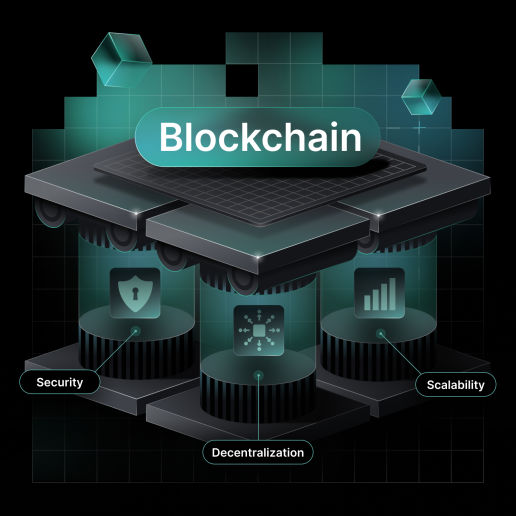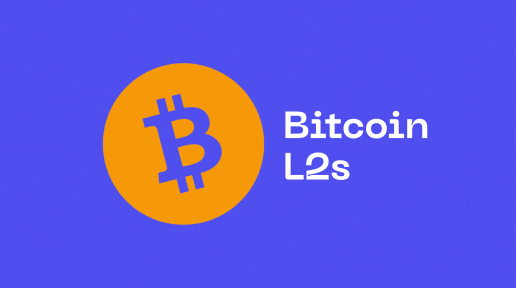Welcome back to Trust Machines' "Scaling Solution of the Week" blog series. Last week, we dove into Hiro's subnets, a layer 2 (L2) scaling solution designed specifically for Stacks.
On that note, layer 2s are crucial to blockchains like Bitcoin and Ethereum because they enable everything from NFTs to the development of decentralized applications (dApps) and smart contract functionality, all on top of a blockchain's base layer. As a result, they're also crucial to the growth of the wider cryptocurrency and Web3 space.
So what are layer 2 scaling solutions in crypto, and how do they contribute to blockchain technology? Layer 2 projects are crucial for the Bitcoin ecosystem as they have helped builders discover additional use cases for the world's oldest digital asset and layer 1 protocol. We'll dive into what layer 2 networks are, and how they contribute to the main blockchain.
What are L2s on Blockchains and Why are They Important for Layer 1?
A layer-2 is a scaling solution built on top of a primary blockchain (the L1). It aims to enhance the main layer's throughput and efficiency by processing transactions off-chain while maintaining the security of the underlying blockchain, thereby addressing scalability issues and data processing difficulties.
Layer 2 solutions generally enhance user experiences and application capabilities by combining more transactions per second with reduced transaction fees and costs, as they create an additional framework that enables transactions to take place with the L1 as a settlement layer. As a result, this secondary layer might take over a sizable amount of the transactions that otherwise would be carried out on a main chain. Transaction data is then transmitted from L2 applications to L1s and securely stored in the blockchain's ledger and historical records.
Over the years, layer 2 blockchain scaling solutions have gained a lot of traction in networks like Ethereum, which now has various examples of layer 2 blockchains including Polygon and Arbitrum. These L2s have helped the Ethereum blockchain scale and enabled the development of rollup technology (like optimistic rollups and zk-rollups) and additional crypto projects with Ethereum as the base layer blockchain.
And of course, a few of the more notable L2 solutions that we know today are on Bitcoin. Why are layers so important to Bitcoin? Bitcoin, like most other blockchains, faces what is known as the "blockchain trilemma," a problem that is commonplace among layer 1 blockchains and a big reason why L2 technology exists.
Overview of Blockchain Scaling Issues in Crypto (The Blockchain Trilemma)

Source: Trust Machines
There are three fundamentals of blockchain layer 1s: scalability, security and decentralization. In an ideal world, an L1 would be able to achieve all three to the highest degree.
The blockchain trilemma, however, refers to the challenges that L1s face in fulfilling all three criteria. When it comes to Bitcoin, the highly decentralized and secure nature of the world's oldest blockchain has meant that Bitcoin, by design, has always been difficult to scale. It was, ultimately, built primarily to support peer-to-peer digital asset transactions and serve as an alternative to established centralized banking systems.
While Bitcoin has excelled in achieving its original goal, it has struggled to process large volumes of transactions per second, causing congestion and higher transaction costs during times of peak activity. This is especially crucial to address in the face of a rising user base that seeks additional use cases beyond the peer-to-peer crypto asset transactions for which Bitcoin was initially created.
Fortunately, a number of Bitcoin L2s have found ways to address Bitcoin's scalability challenges. They have allowed Bitcoin to maintain its high level of decentralization and security while still allowing for faster transaction speeds and more on-chain capabilities.
Examples of Bitcoin L2 Scaling Solutions
We've elaborated on what L2s are and why they are so important for Bitcoin’s scalability. Now, let’s dive into some Bitcoin L2s to understand what they do.
- Lightning: The Lightning Network reduces congestion on the Bitcoin network by enabling quick and affordable peer-to-peer transactions through payment channels. Without disrupting the primary blockchain, parties establish a direct channel for instant transactions. Lightning Network decreases congestion and improves the usability of Bitcoin for routine transactions by combining transactions into a single record after closure.
- Stacks: Stacks is a project that aims to unlock Bitcoin’s full potential with its own Proof of Transfer (PoX) consensus mechanism and Clarity, a smart contract language. It helps enable smart contracts on Bitcoin, and has introduced NFT projects, DeFi and other use cases to the blockchain.
- RSK: Rootstock (RSK) is a smart contract platform built as a sidechain to the Bitcoin blockchain, enabling developers to create and deploy decentralized applications (dApps) with smart contract capabilities while utilizing Bitcoin's security. It aims to enhance Bitcoin's functionality by adding programmable features and interoperability with the Ethereum ecosystem.
- Ark Protocol: Ark Protocol introduces Ark Service Providers (ASPs) to streamline transactions, using quick, blinded CoinJoin sessions called pools. These sessions guarantee fast cancellation or payment confirmation. When used in conjunction with txlock conditions, ASPs improve security and reduce fraud. This ground-breaking method enhances off-chain transactions, reducing network strain and enhancing the scalability of Bitcoin.
Unlocking Bitcoin Scalability by Embracing Layer 2 Solutions
Bitcoin L2s play a pivotal role in helping unlock the full potential of the Bitcoin blockchain. They mark a significant stride towards widespread adoption, ushering in a new era of possibilities for decentralized finance, micropayments, and beyond. With Layer 2 solutions at the forefront, the future of Bitcoin shines brighter, promising a more scalable, efficient, and decentralized landscape.
But of course, the Bitcoin ecosystem is vast and L2s aren't the only scaling solutions. We'll continue our "Scaling Solution of the Week" series next week by diving into another scaling solution that has become increasingly popular over the years: sidechains.

